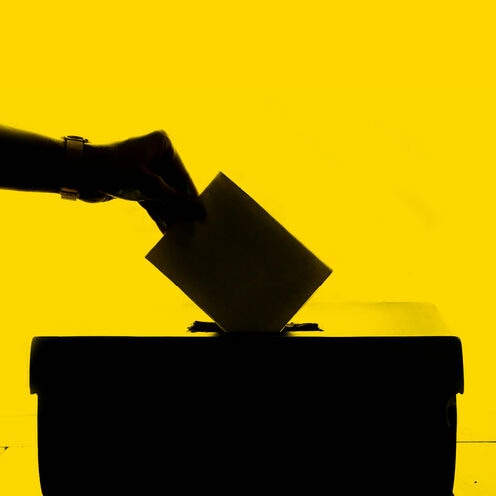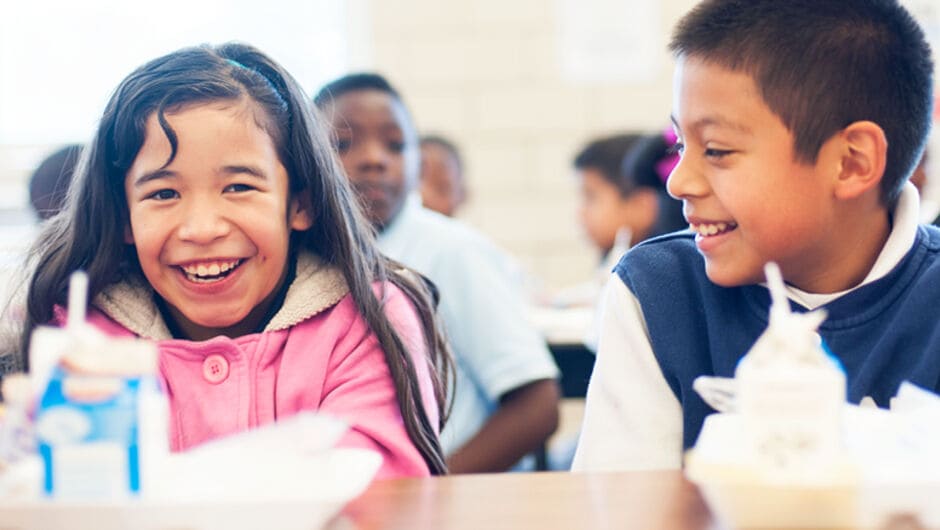
Improving Voting Access for Marginalized Communities One School at a Time
Blanca Adriana Ontiveros (New Mexico ’12) works with schools, educators and students to boost understanding of how children can advocate for change and push for greater voting access.
Blanca Adriana Ontiveros has taught bilingual special education, organized teachers to advocate for inclusive education policies, and mentored immigrant youth activists. Now she empowers youths across the country to mobilize during elections and make their voices heard.
Ontiveros (New Mexico ’12) emphasizes that the work of encouraging people to be active community members and positive changemakers has to start early. Even if they are not citizens or not legally old enough to vote, high school students can start learning how to think about and advocate for issues they're passionate about.
“This is about more than just numbers for voter registration,” Ontiveros said. “We want to make sure that our students think about civic engagement in a broader perspective. Students who are engaged at the high school level are most likely to continue to be engaged throughout their lives.”
As a teenager, Ontiveros had mentors who taught her the importance of social justice. She works to boost civic engagement, particularly among marginalized communities, as a way to pay it forward.
“Students who are engaged at the high school level are most likely to continue to be engaged throughout their lives.”
“I work with students and teachers because I believe that other students like me deserve someone that believes in them and provides them with the tools to not only make the changes they want to see in their lives but also the changes they want to see in their community, country, and world,” Ontiveros said. “I believe civic engagement and involvement sets the foundation for students to develop critical thinking skills that will expand beyond the classroom and into adulthood.”
In May, Ontiveros became the director of educator engagement for When We All Vote, a nonpartisan initiative founded by former first lady Michelle Obama that aims to close racial and age disparities in voter registration and civic participation. Ontiveros also oversees My School Votes, a project of When We All Vote that works to ensure eligible students are registered to vote.
My School Votes facilitates student-led voter registration clubs that teach leadership skills as well as how to advocate for local issues and create informational campaigns. For example, a recent campaign centered around educating young voters about the benefits of climate legislation, such as the Inflation Reduction Act, which could spur civic engagement among students who are passionate about addressing climate change. The student-led clubs follow a Civics 101 curriculum, a yearlong training program for students and educators to learn how to organize and mobilize their school communities. With My School Votes, Ontiveros manages a partnership with 236 schools where the majority of students are students of color. Each participating school aims for a minimum of 50 new voter registrations per semester.
Ontiveros talked to One Day about how civic participation, voting access, and immigrant rights have been a throughline of her work as an educator. She shared how educators can create safe spaces in schools for undocumented students to engage in the election process and lead their communities. She also discussed how teachers of color can have an impact on policy within and beyond their school communities, improving access to voting rights and information for historically marginalized communities, and mobilizing youth into cycles of life-long civic engagement.
How are you working with individual schools to help improve voting access? How do you motivate teachers to activate their students around issues affecting their communities?
We're very technology driven. Students create a digital application that allows them to have access to their voter registration records, see if they have registered, what the process will look like for them, what their requirements are, and so on. We are in constant communication with the school districts. Teachers have access to me on a one-on-one basis if they need support. We've had a couple of schools say “I only have five students who are highly engaged civically. How can we increase engagement?” And I sit down with them and strategize on how to make voting appealing to students.
One of the teachers wanted to do a specific type of training on how to activate their students around a racial justice issue that was affecting their community. A lot of the training that I do with teachers is what we call asset mapping or community organizing. What are the power dynamics? How do you control the messaging and have the kids find out their own power? And who do they need to connect to inside the district to move forward the agenda that they have or challenge what they're seeing in their school? Part of our civic engagement program is training students to be more of an advocate and to think about an issue and what they feel passionate about and how to make those changes either in their district or in their community.
Get more articles like this delivered to your inbox.
The monthly ‘One Day Today’ newsletter features our top stories, delivered straight to your in-box.
Content is loading...
Voter turnout tends to be lowest among those ages 18 to 24. In the 2020 presidential election, almost 71 percent of white voters cast ballots compared to 58 percent of voters of color. Due to discriminatory roadblocks and restrictive voting laws, the disparity between white and nonwhite voter turnout has remained unchanged over the last six presidential elections. How can schools aid in closing age and race disparities in voter participation?
By providing a yearlong program, we believe that students will have constant information flowing inside the school and that we will create a culture of change around voting. We try to partner up with folks in the community that are active on social media or boards of directors who are passionate about the issue that we believe in, which is voting access and making it more appealing to younger people.
Through the Civics 101 curriculum, we are very strategic on how we target students at the high school level, starting from their junior year. We're also working on developing curricula for middle school students. Awareness is one of the big pieces that we try to promote in our program. Having another kid come and talk to you and normalizing voting are very important.
As a student of color myself who grew up in a different country and migrated to the United States when I was 15 years old, I remember the first time I voted was because my peers were also really excited about voting. There's power in having peers share that experience with each other and encourage each other to go out and vote. That's the uniqueness of our program. Yes, teachers are my focus, but overall, our program is student-led. Students are at the forefront of the work. And it's about leadership and it's about making sure students share their voices with each other, not just about getting students to register to vote. That is just one steppingstone to the work that they're going to continue to do beyond their high school years.
Years ago, you started an organization that mobilized youths to advocate for equal access to higher education in New Mexico for all students regardless of immigration status. How are you continuing that type of advocacy in your current role at When We All Vote?
There has to be an understanding that even for students who are undocumented, even though they might not have the ability to vote, it doesn't mean that they cannot be part of the process of getting people elected. There's that fear and misunderstanding that because they're not citizens they cannot be engaged, and there's nothing further from the truth. They can organize themselves. They can still participate in getting other people registered to vote. They can still engage with their peers in conversations about the importance of voting.
My School Votes shares tips on how to talk to undocumented students about voter registration. We talk about not singling them out in a classroom. We talk about making it a safe space inside a classroom for undocumented students. We talk about bullying. Having that understanding, communicating that to teachers, is important because sometimes they feel afraid for their kids. And it's normal because a lot of our communities have been living in fear for a long time. But we have to remember that change is not going to happen unless we make it happen.
“There has to be an understanding that even for students who are undocumented, even though they might not have the ability to vote, it doesn't mean that they cannot be part of the process of getting people elected.”
In 2016, you worked with educators in southwest Chicago to advocate for more inclusive and innovative education policies at the local and state levels. What advice would you give for teachers of color who want to organize and make policy changes within and beyond their school communities? How can they make their activism a reality?
Don't be afraid of telling the truth and speaking up about what you believe. Connect with other groups out there and people that share your values. Connect with the union and with groups like, for instance, Teach For America. Look into opportunities to volunteer, start off on a small scale, and then keep on going from there. There are a lot of groups out there like Leadership for Educational Equity that do a lot of work around policy and how to move your ideas into action.
My belief is that a good teacher is the one that does anything for their students. A great teacher or an excellent teacher is the one that can see the challenges that are affecting the classroom, and they seek opportunities in the community to make changes and advocate. Excellent teachers, to me, are the ones out there looking to make policy changes in the small things that might affect their daily life.
And the last thing is to stay informed as much as possible about what's happening in your city. What are the changes happening in the legislative session in your state, and how are those going to affect you?
This interview has been edited and condensed for clarity.
Sign up to receive articles like this in your inbox!
Thanks for signing up!
Content is loading...







